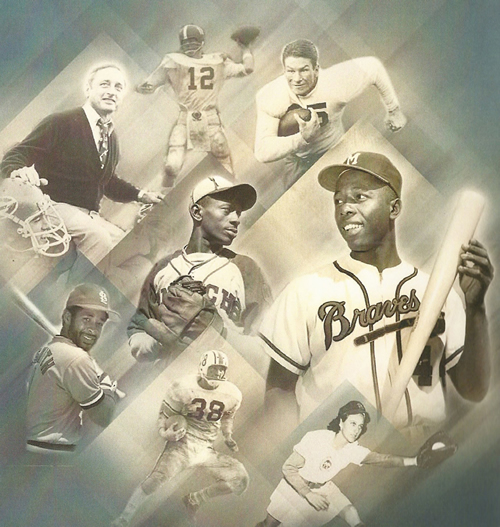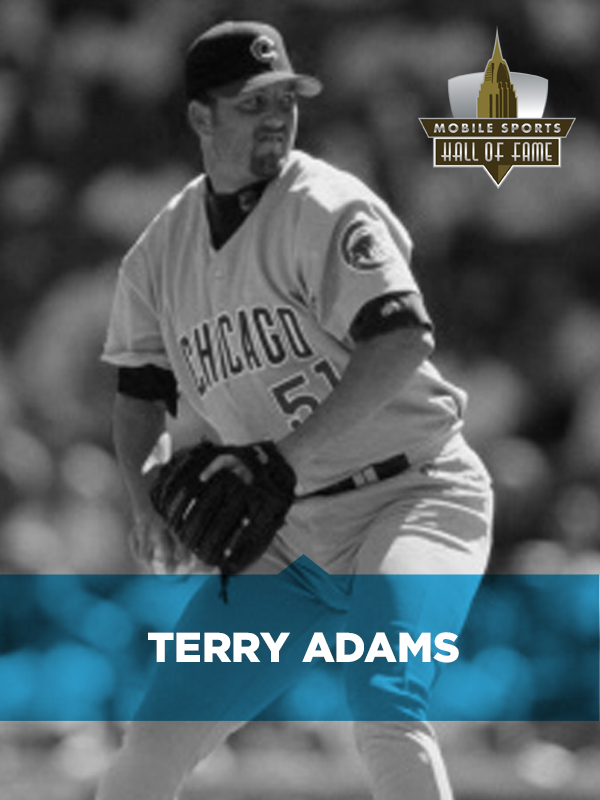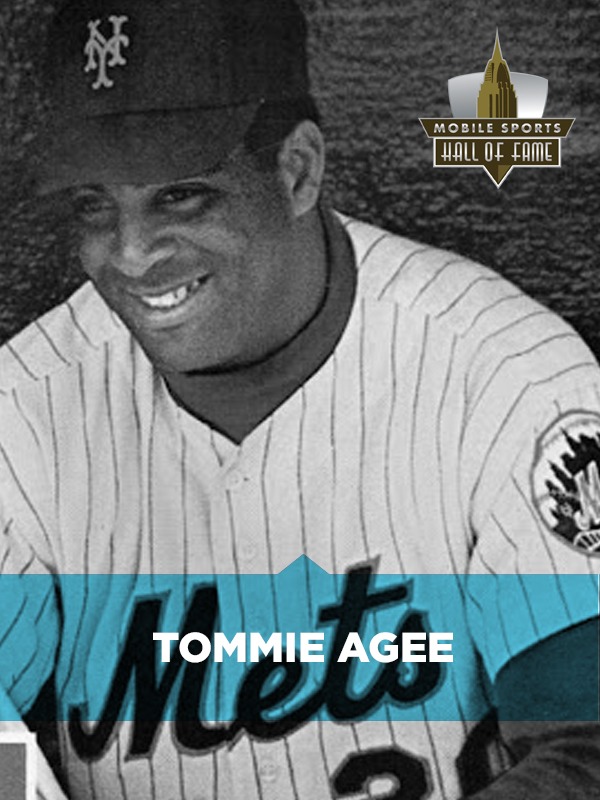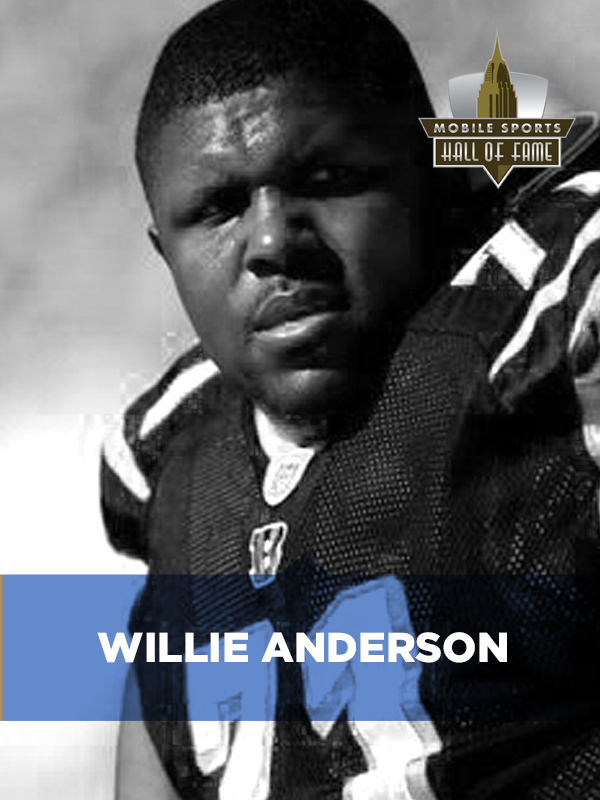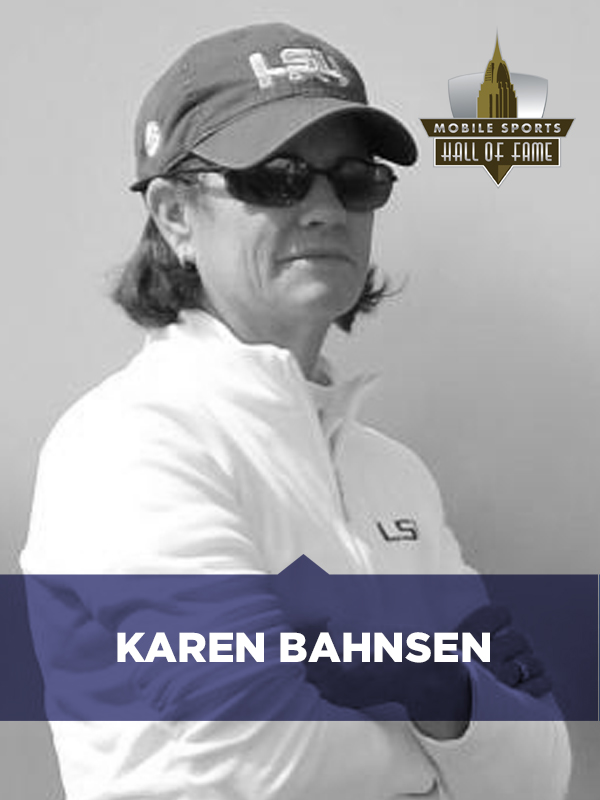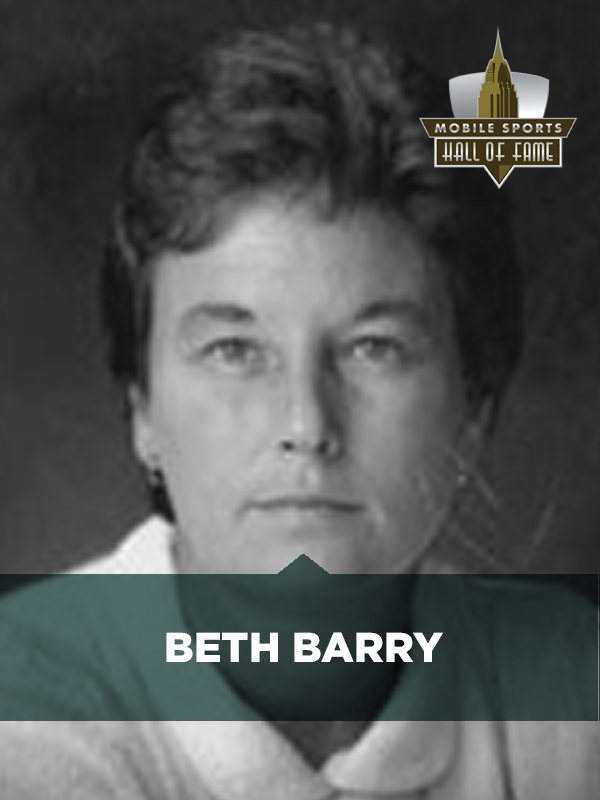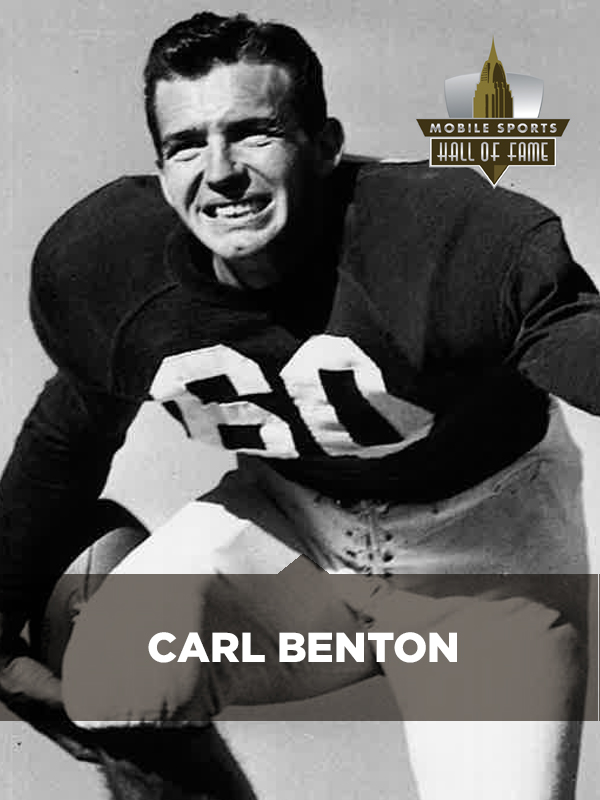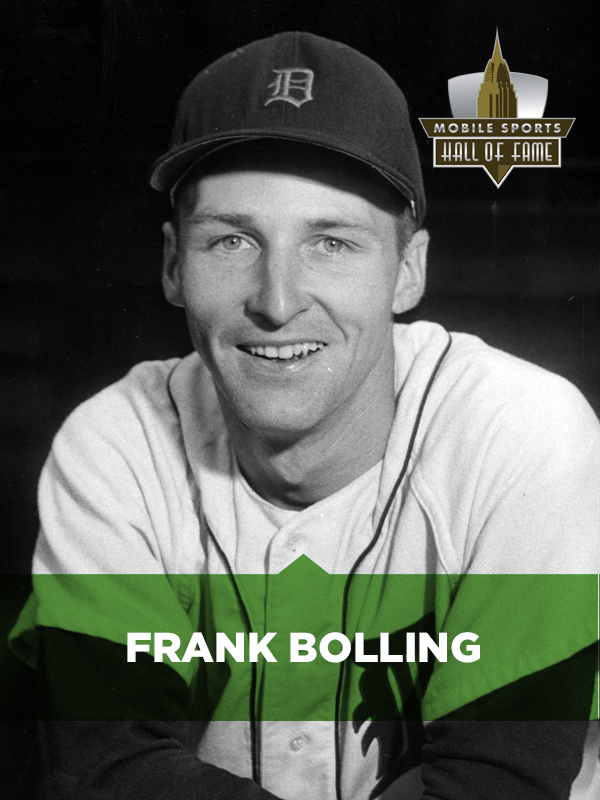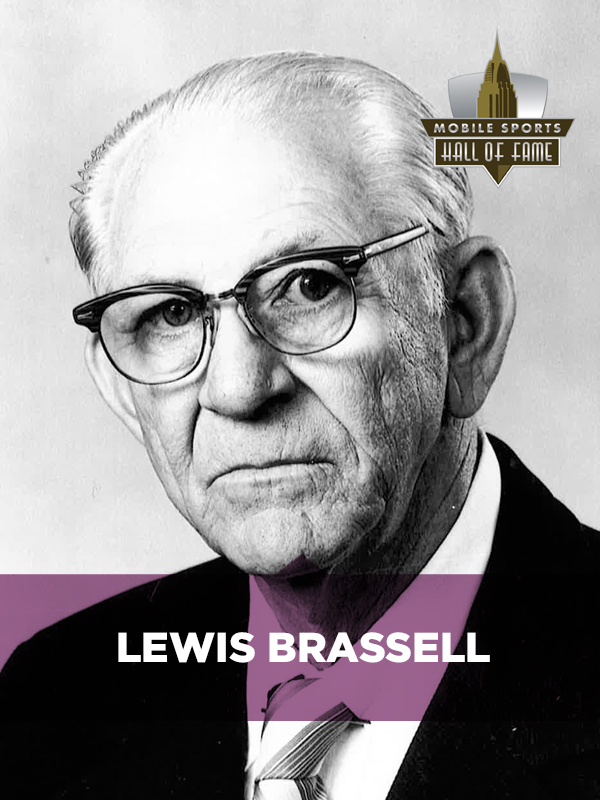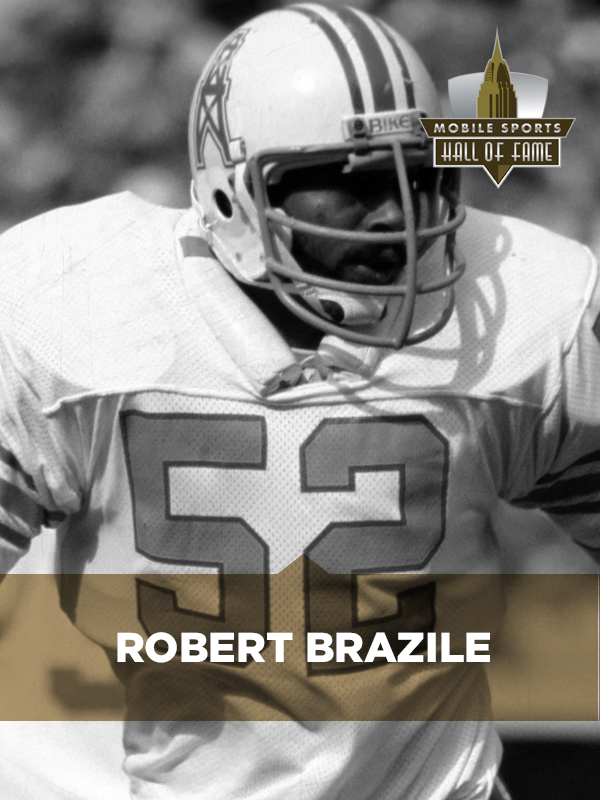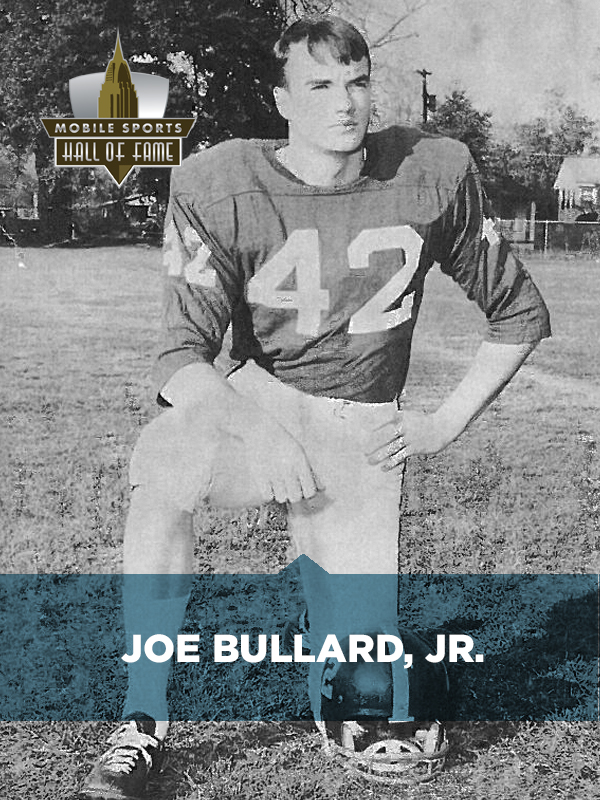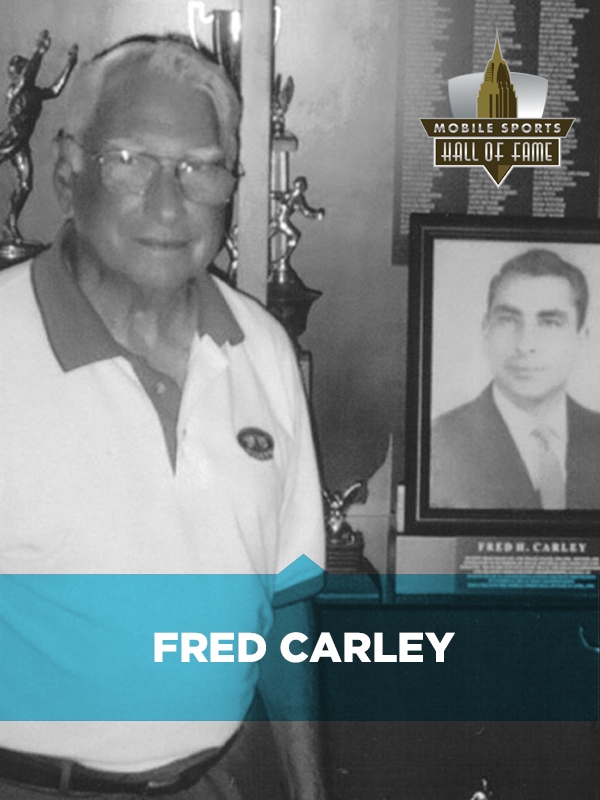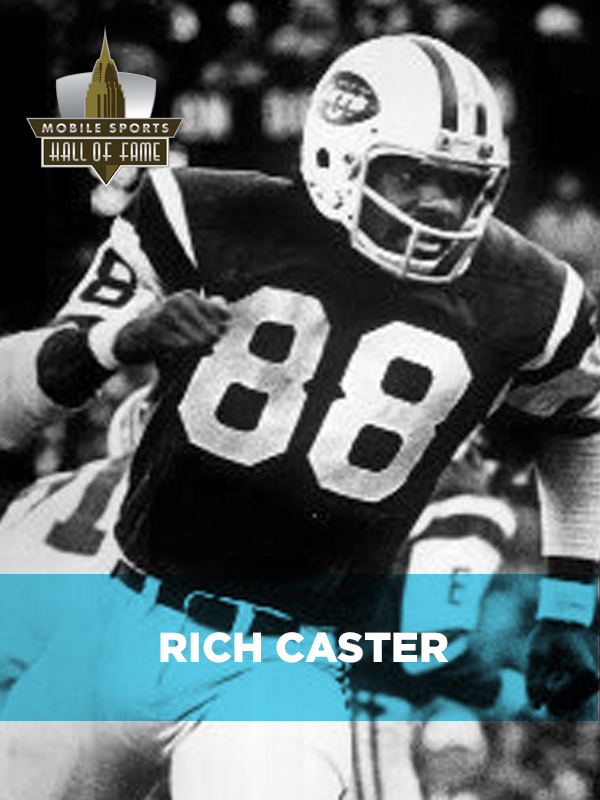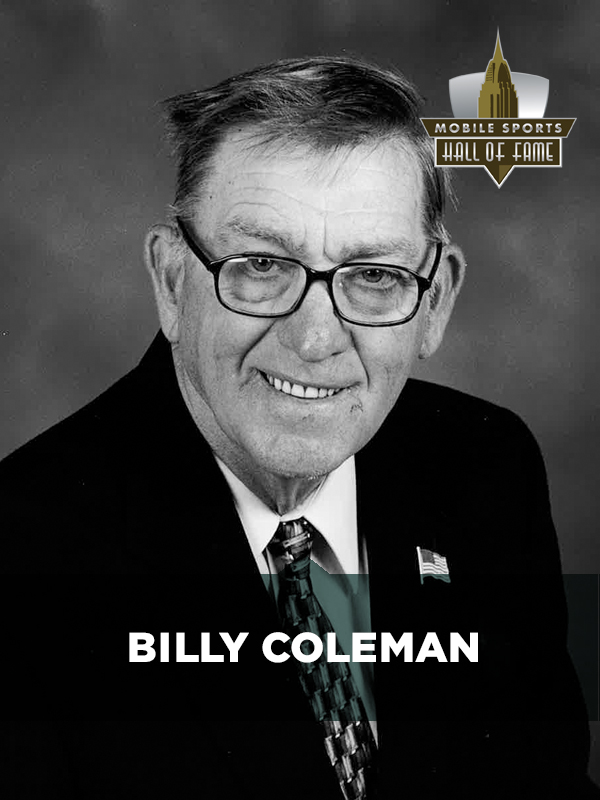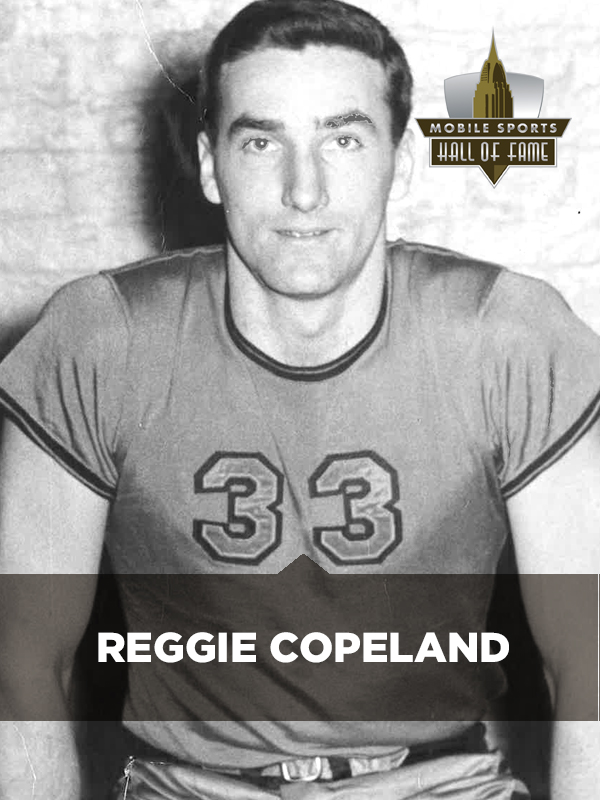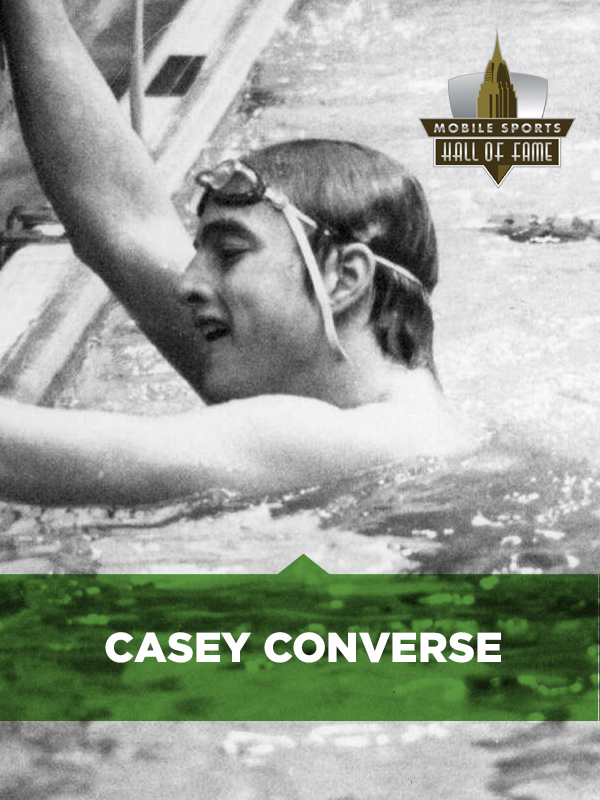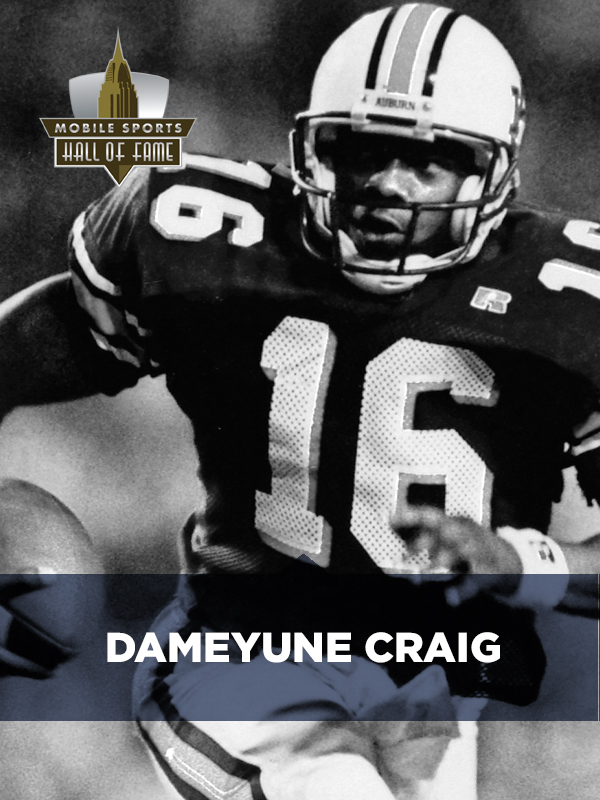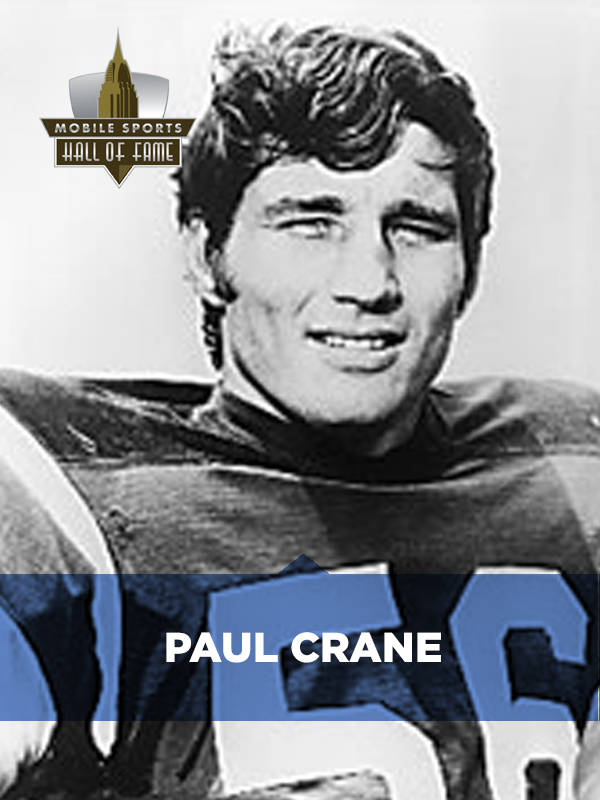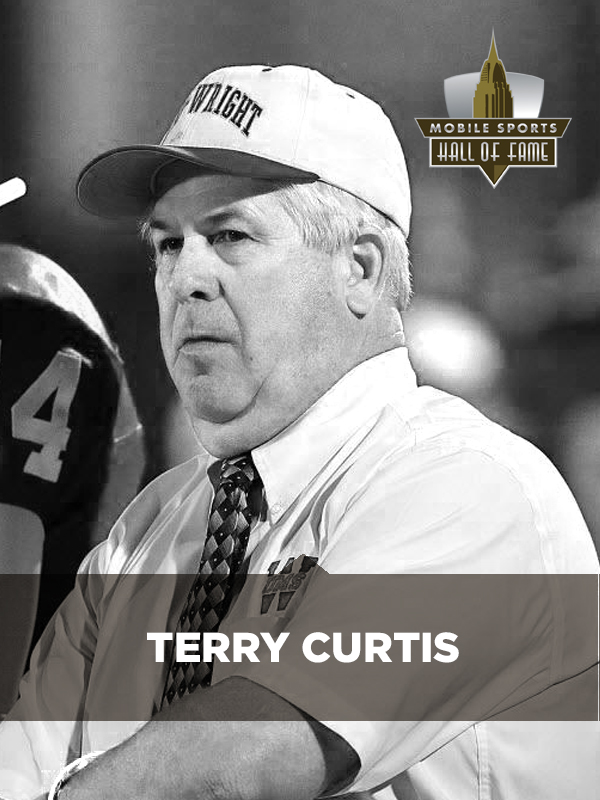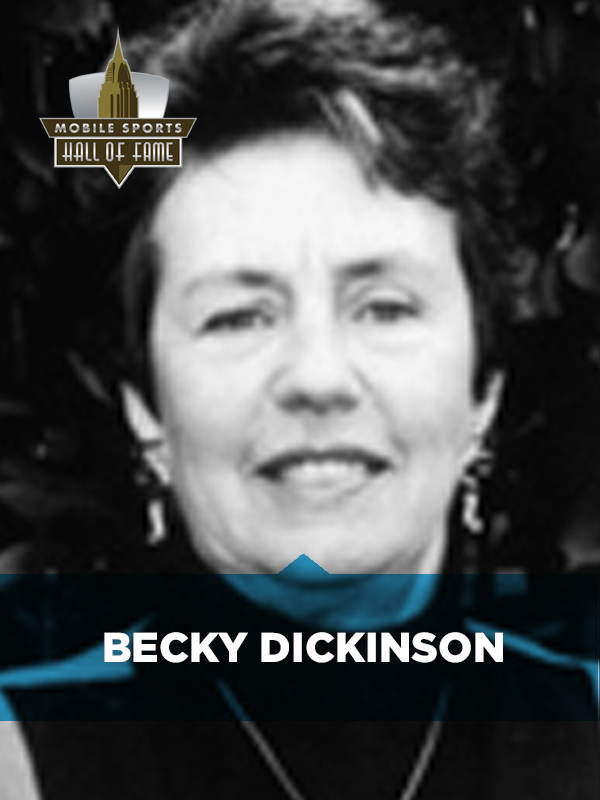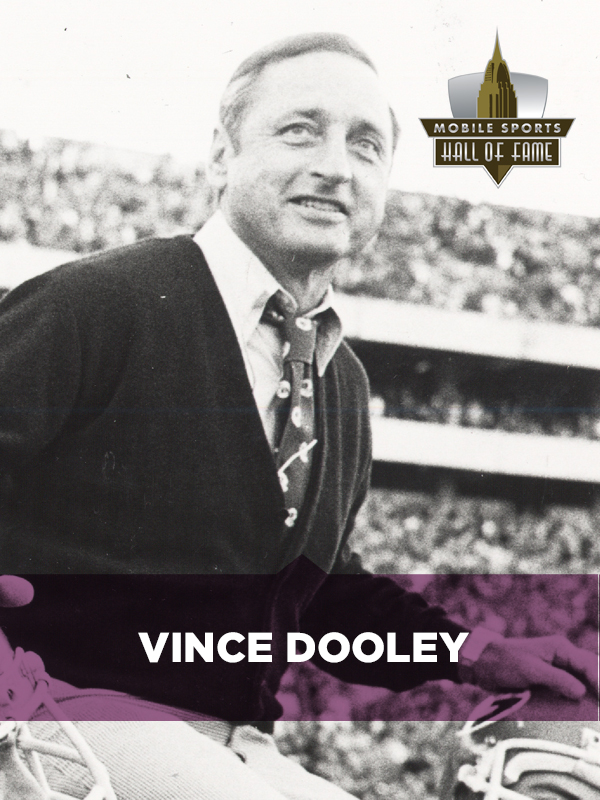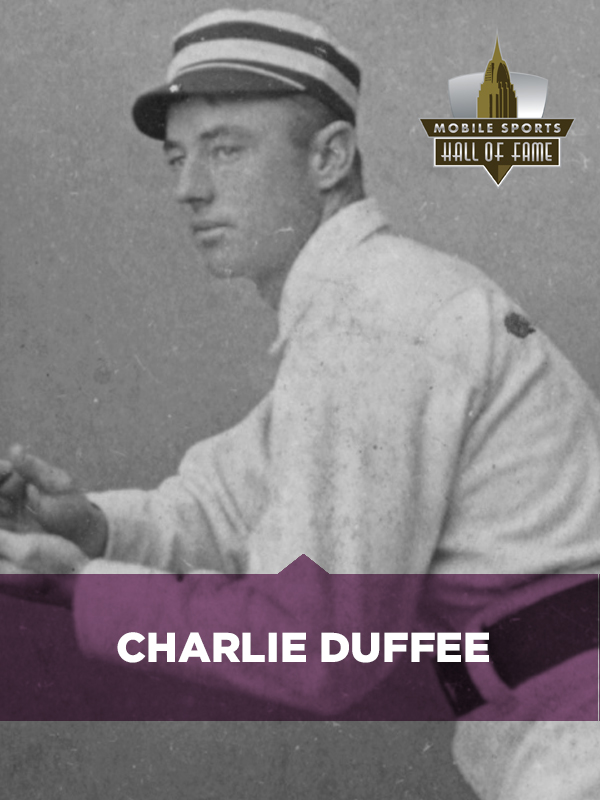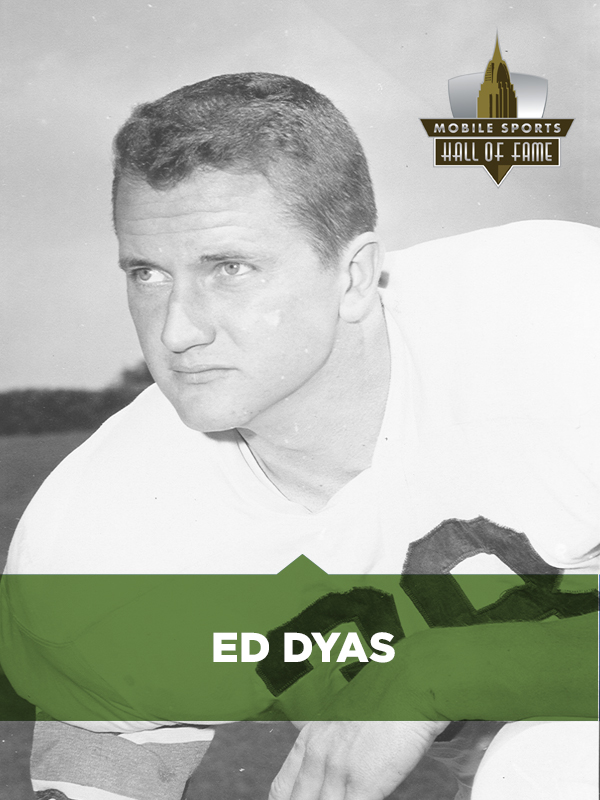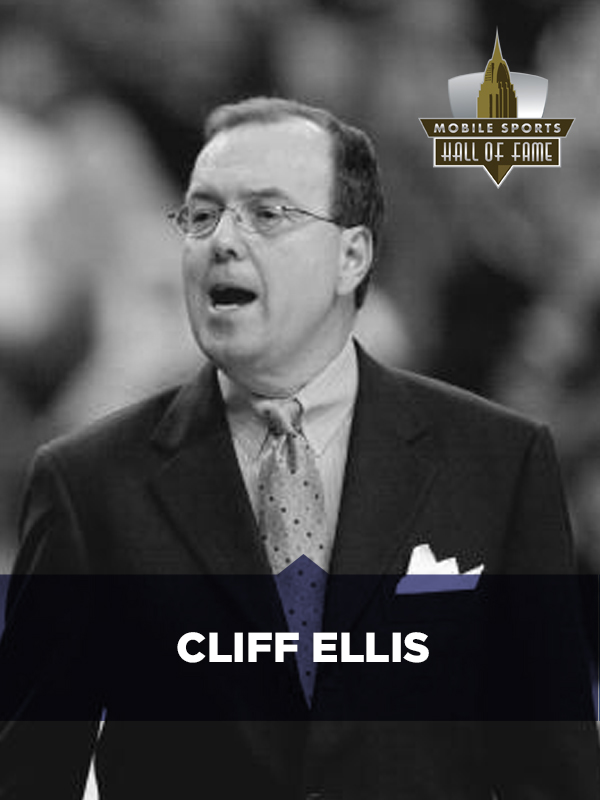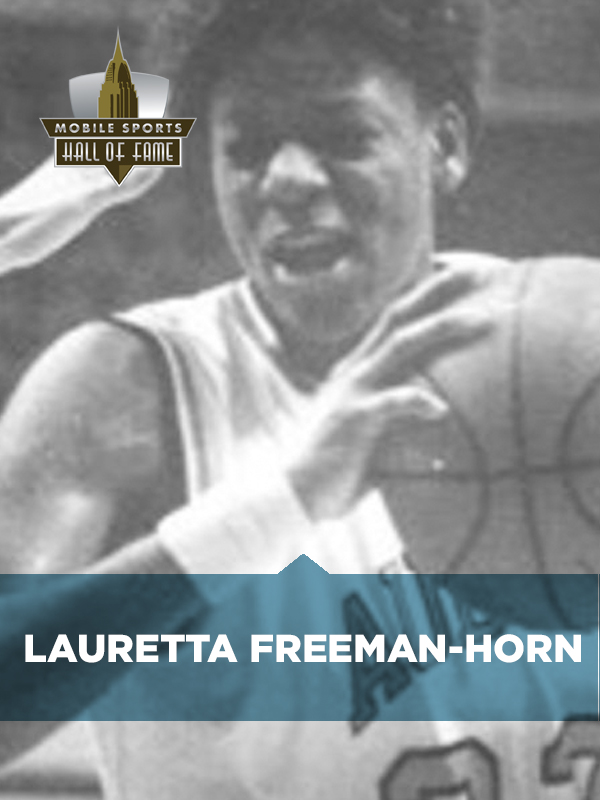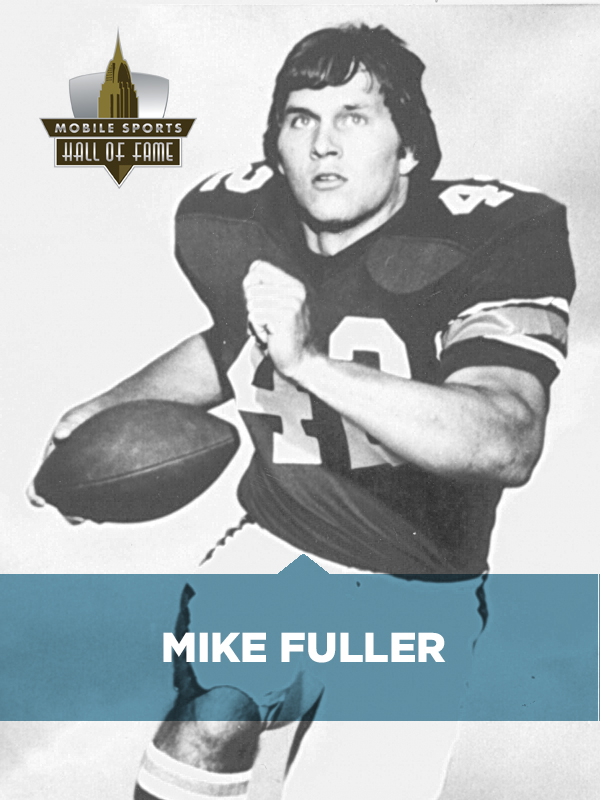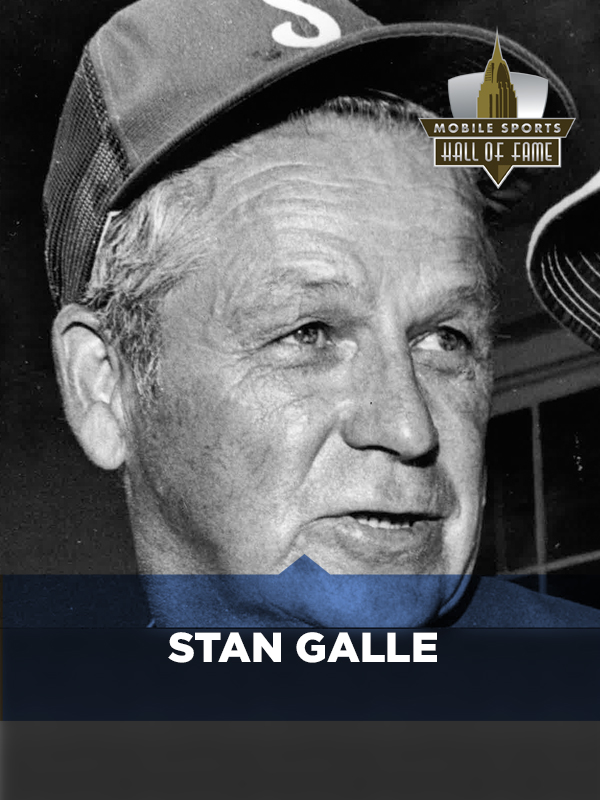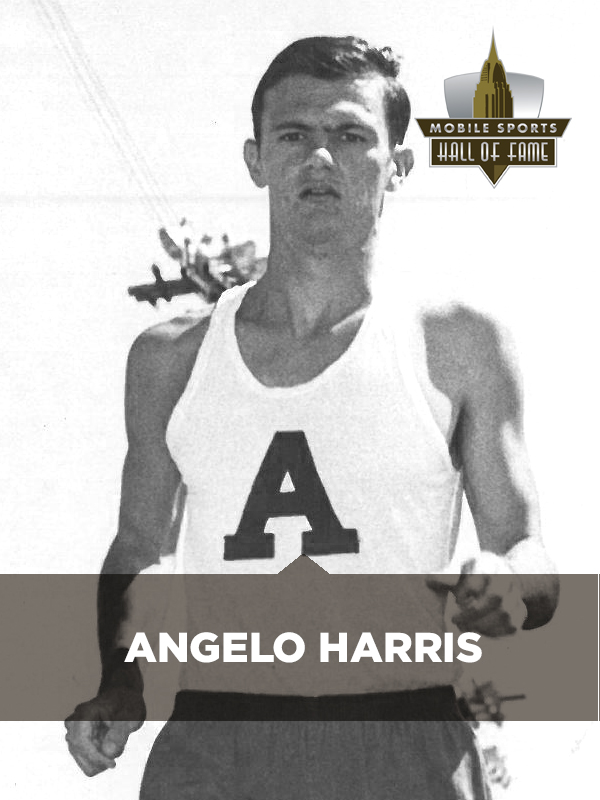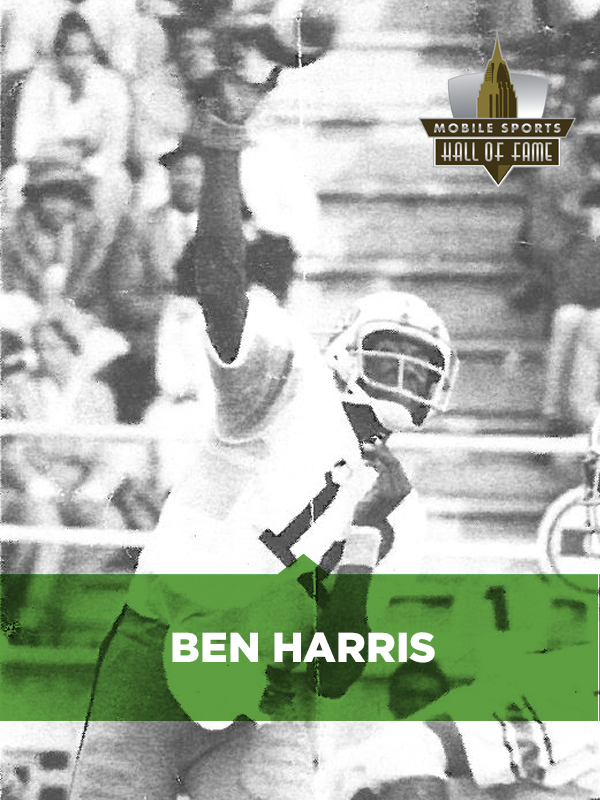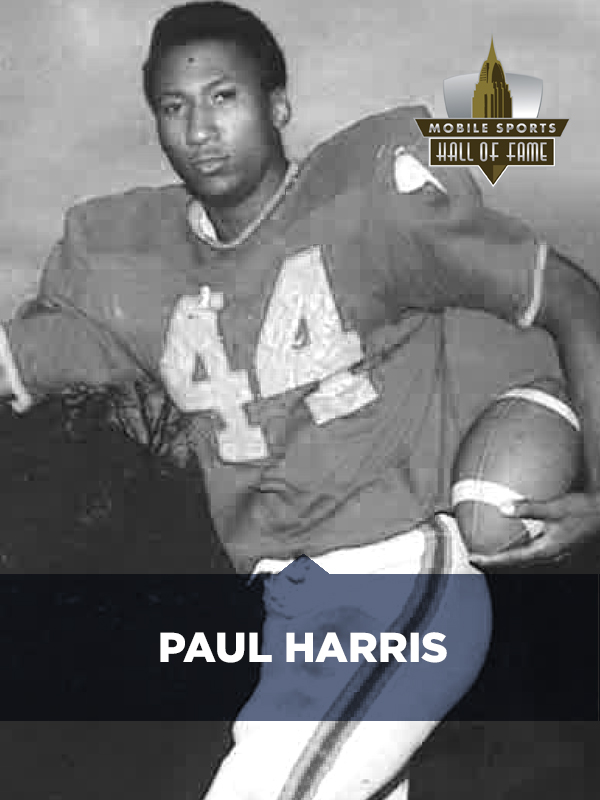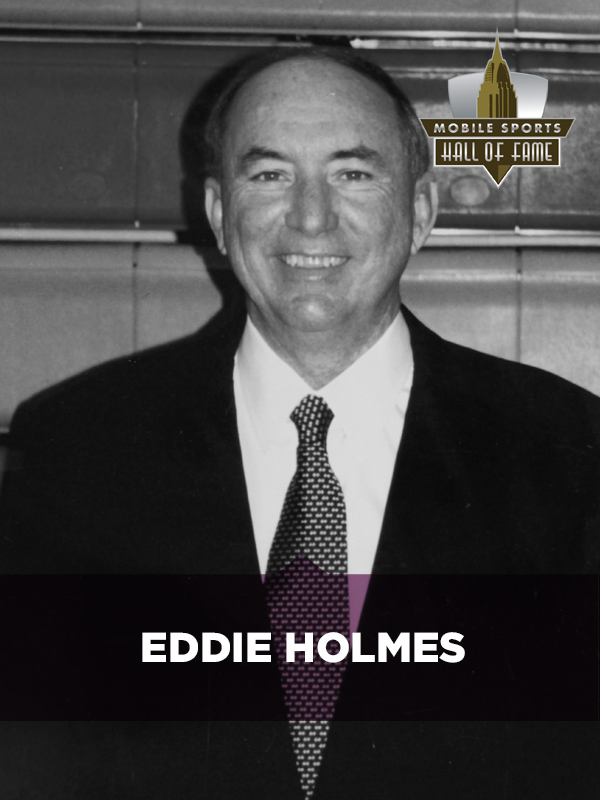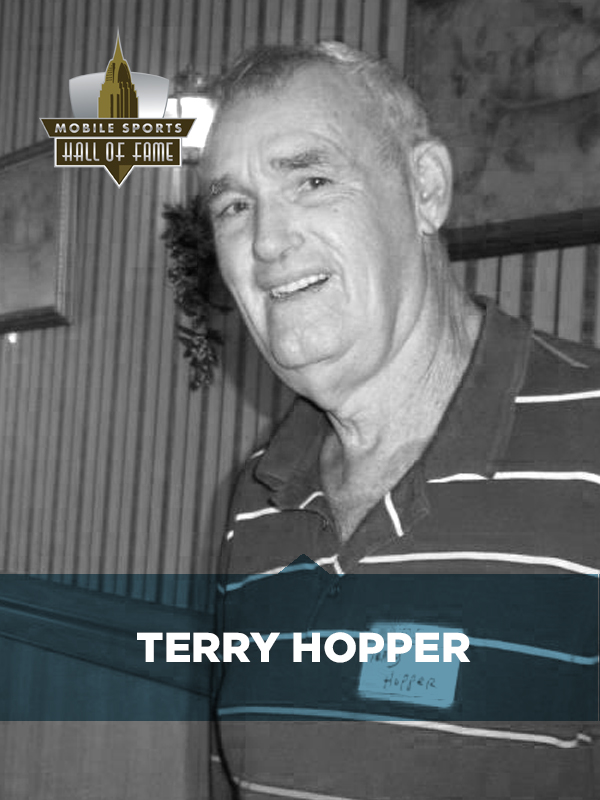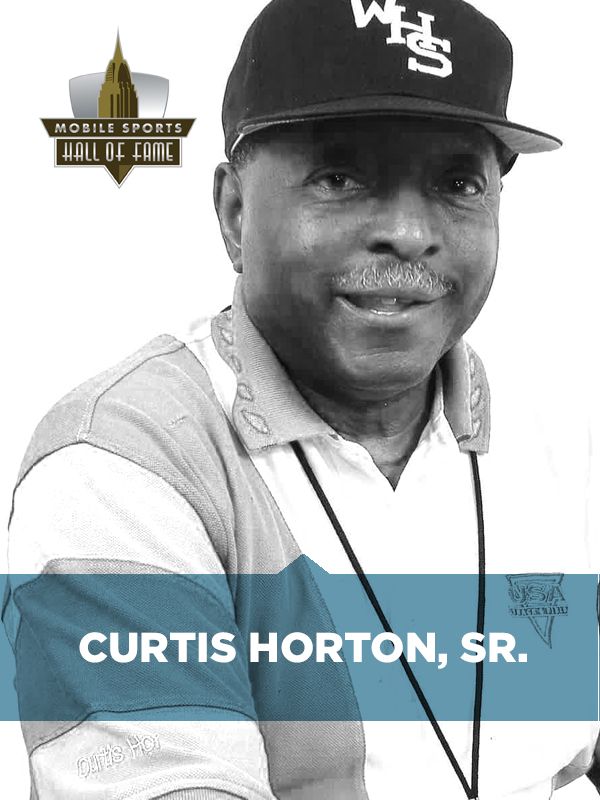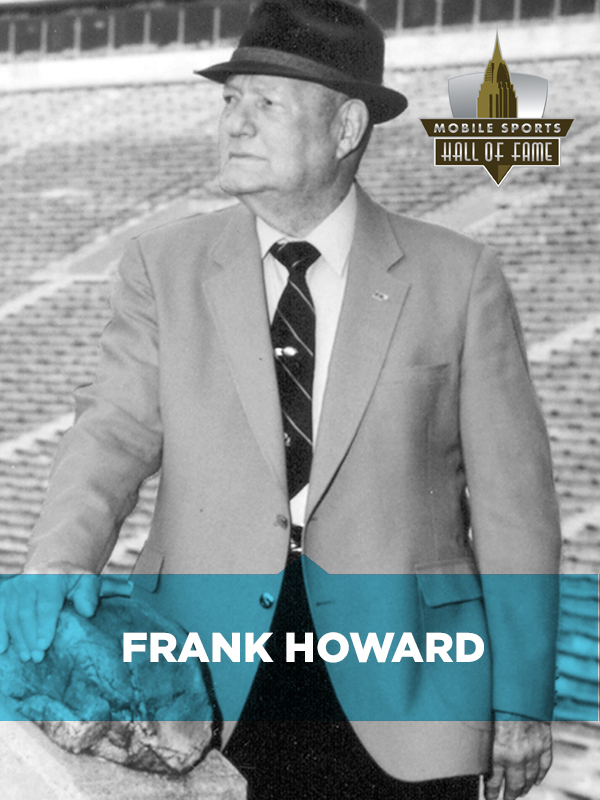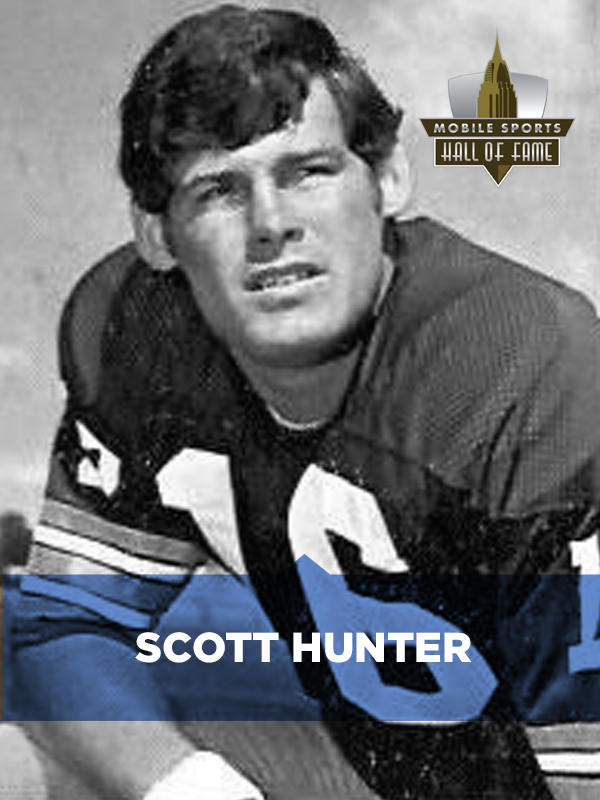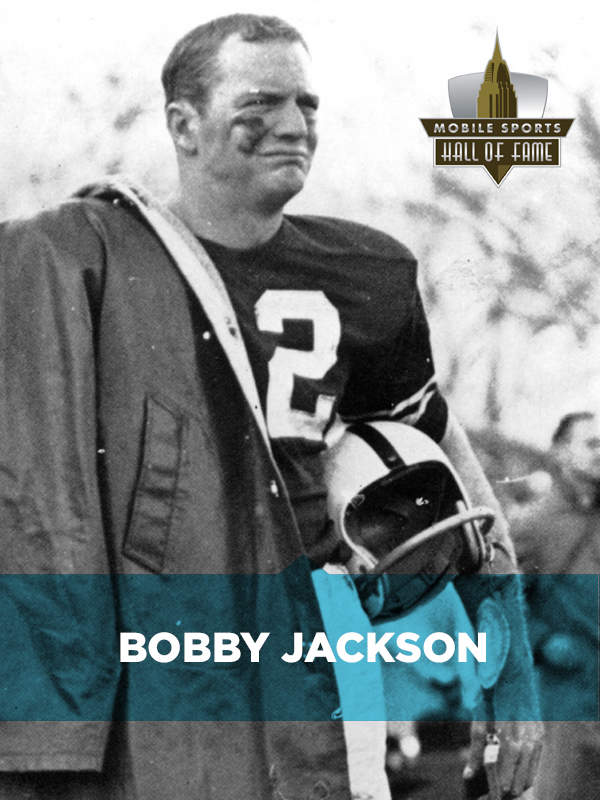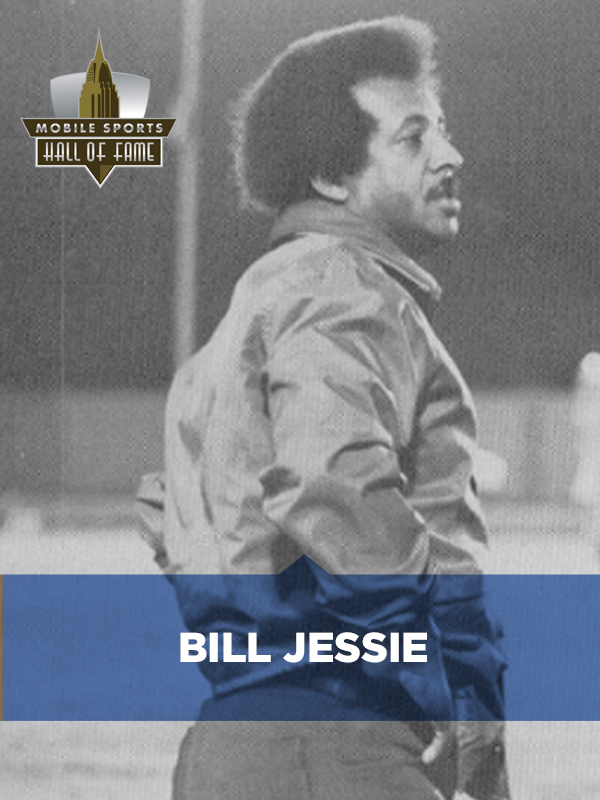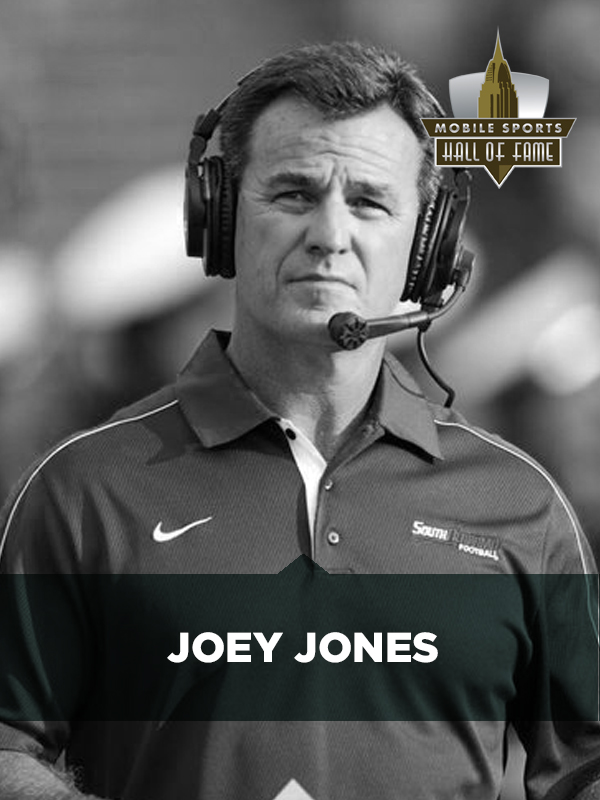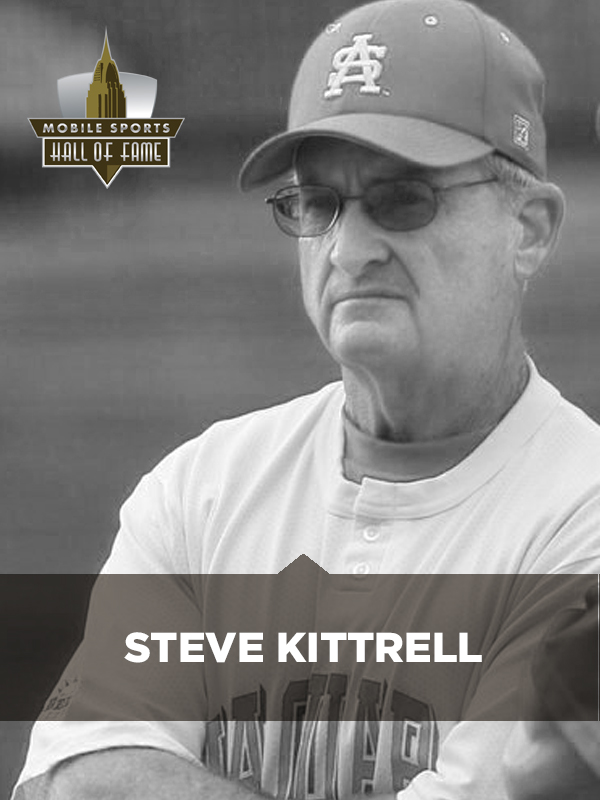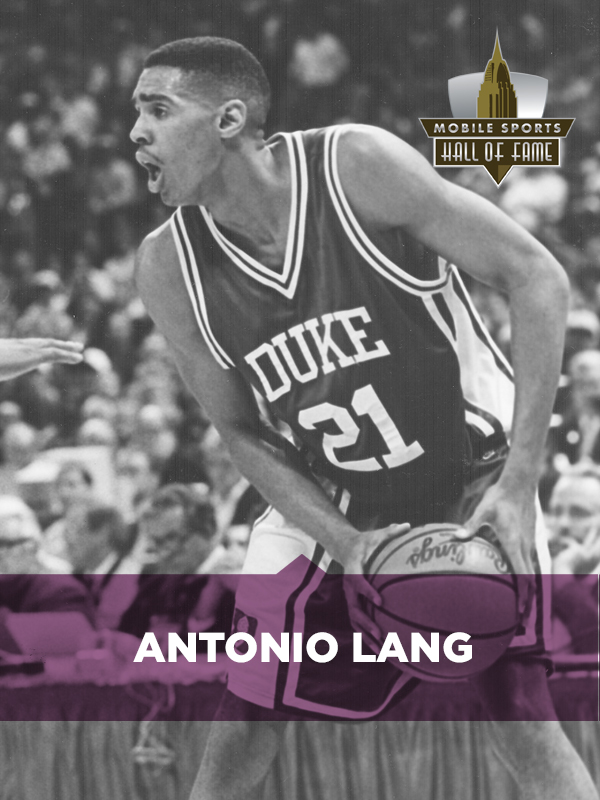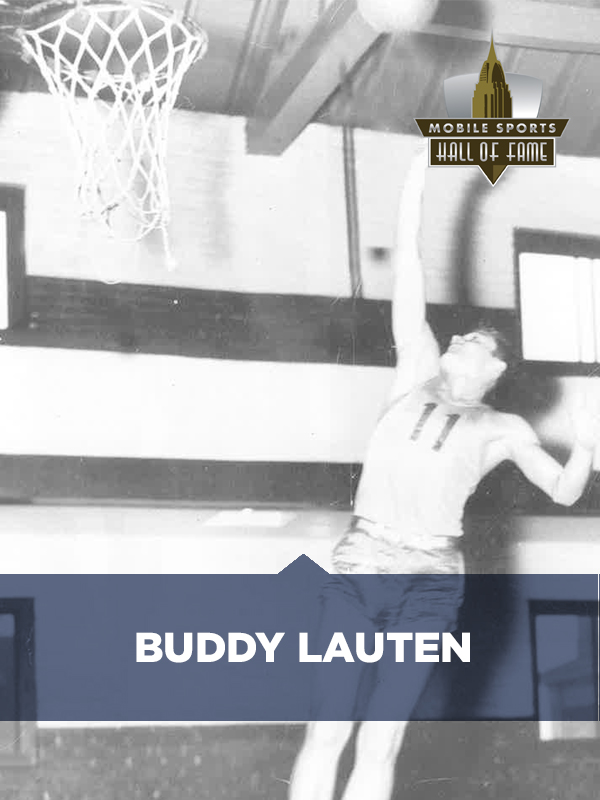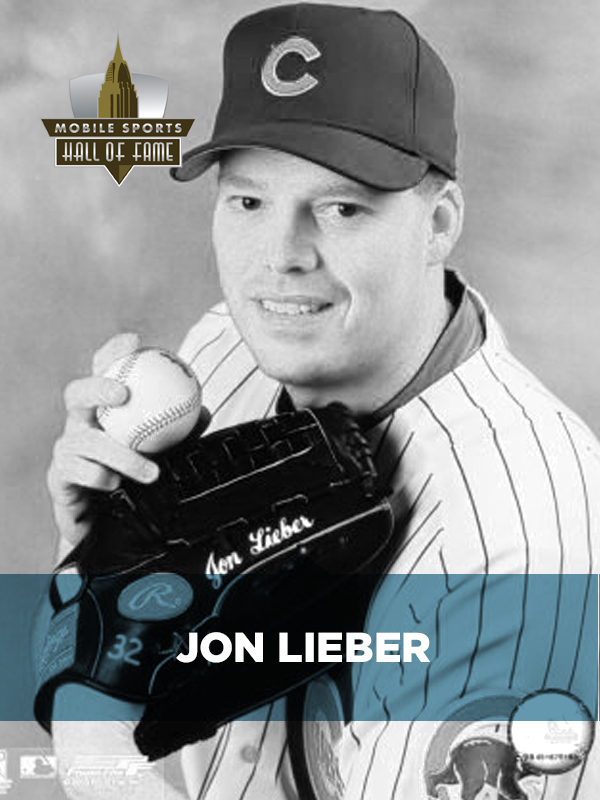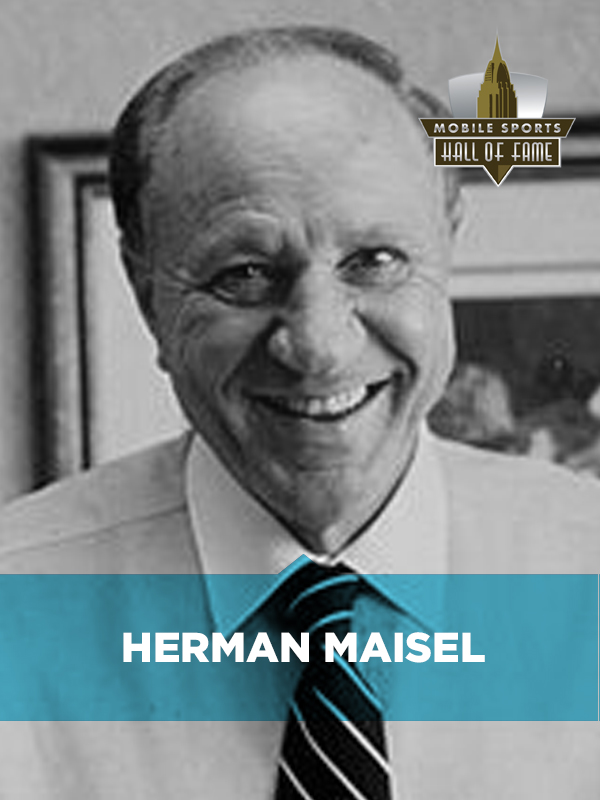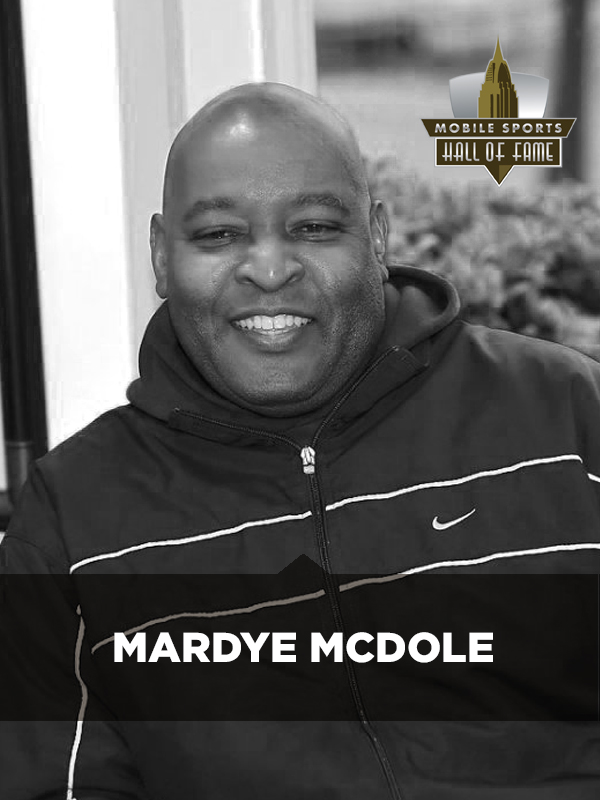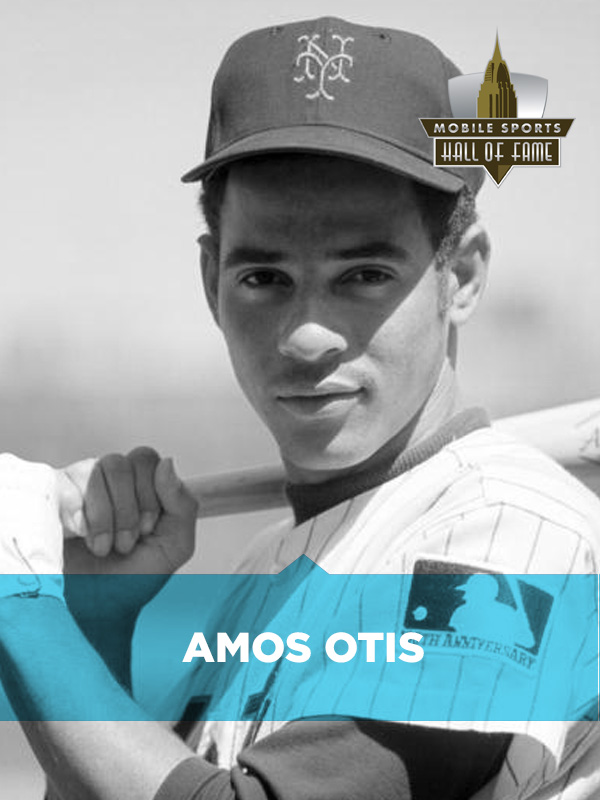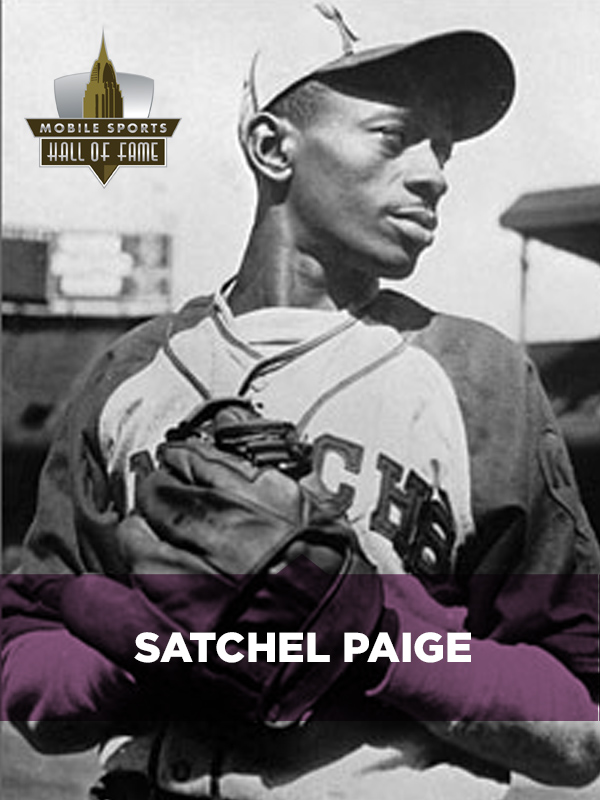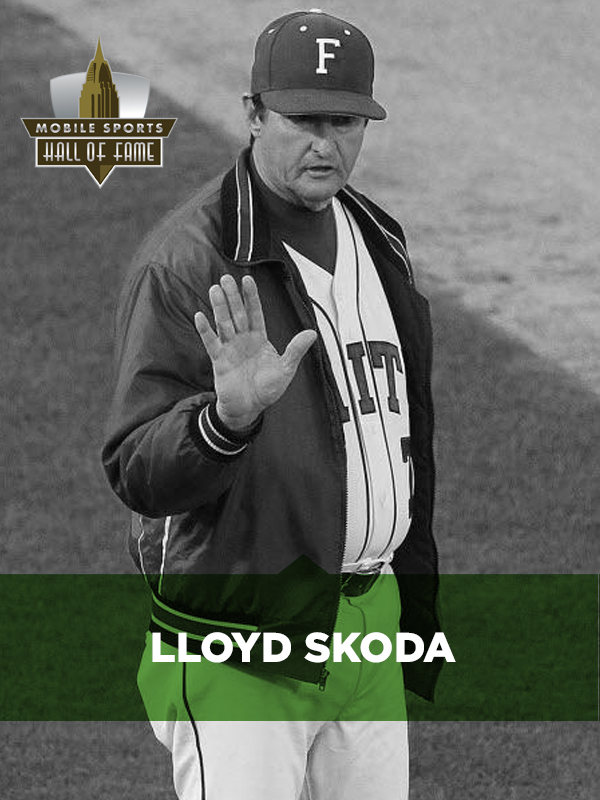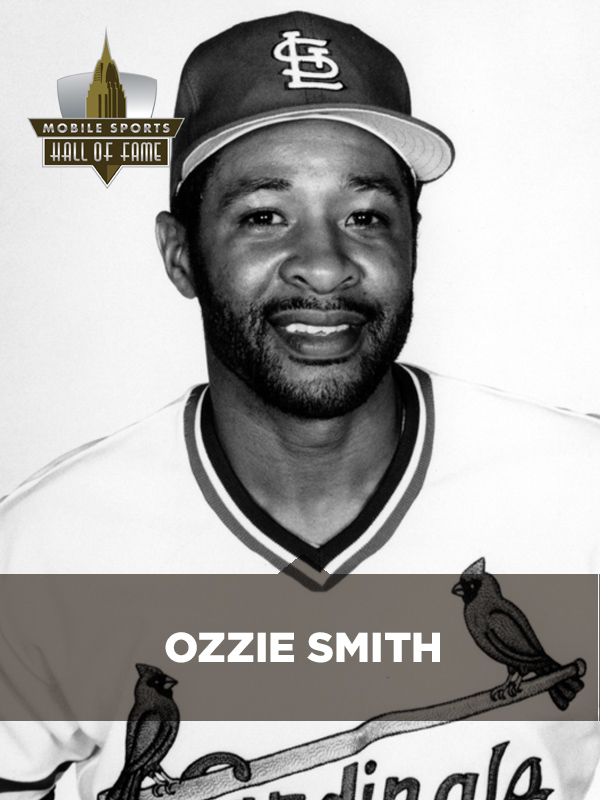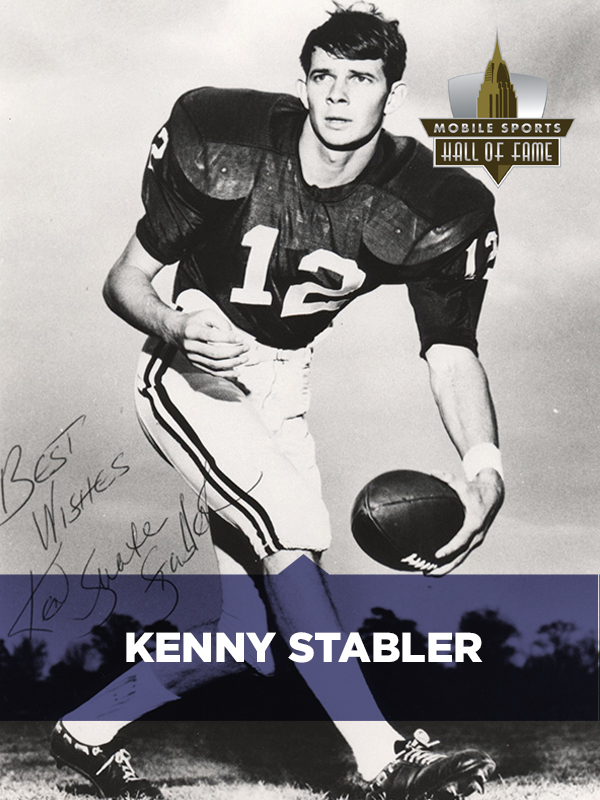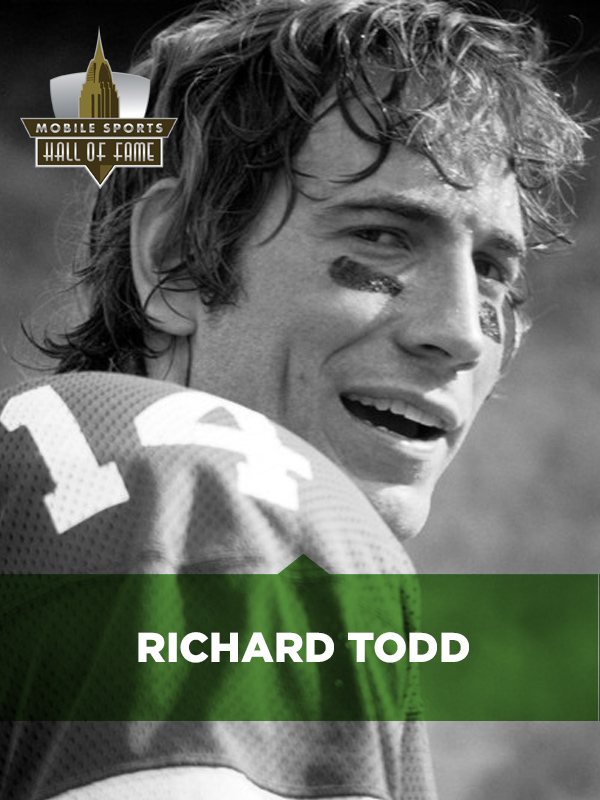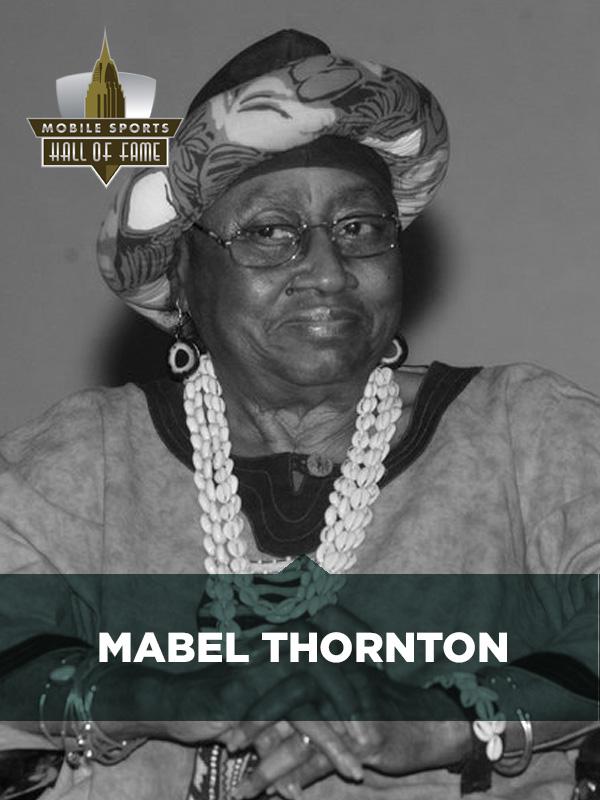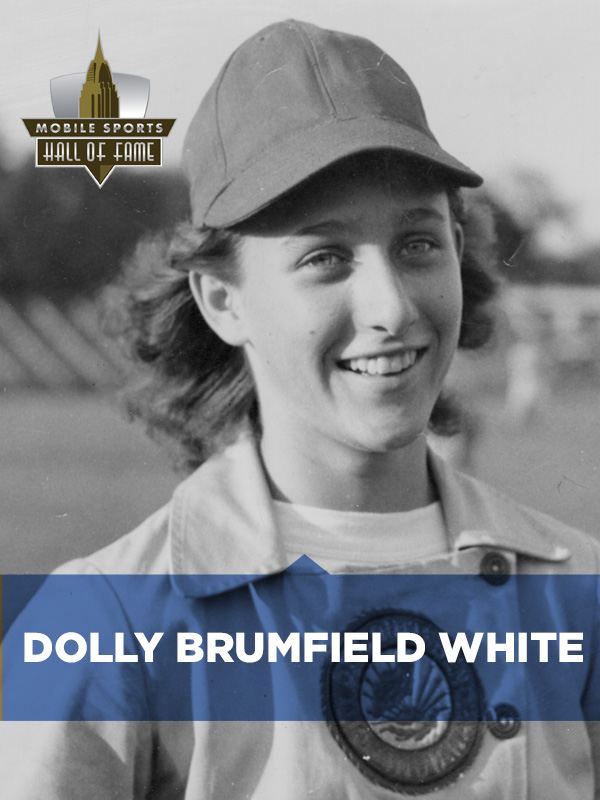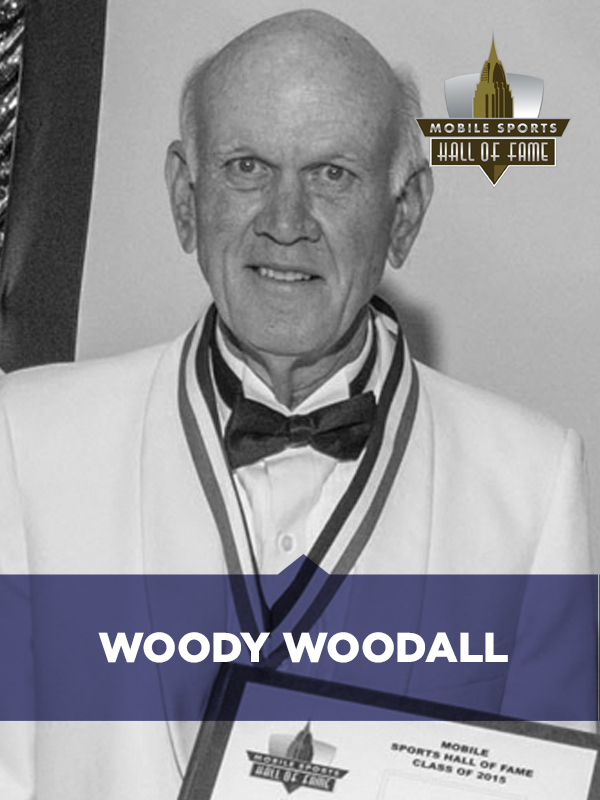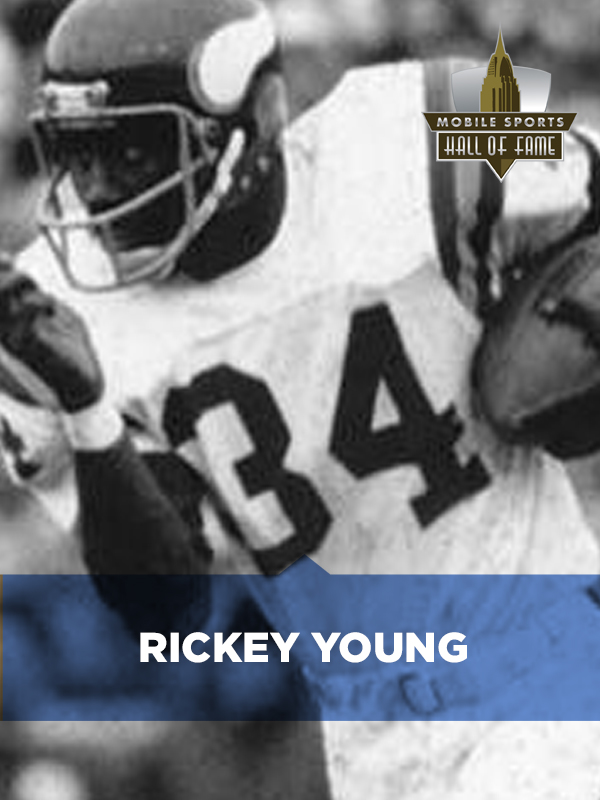-
A - C
HENRY “HANK” AARON
1988
National Baseball Hall of Fame Inductee – 1982. 23-Year MLB career with Braves and Brewers (1954-76). Set major league record with 755 career home runs. Member of Baseball’s All-Century Team.
TOMMY AARON
1992
Tommy Aaron is the younger brother of Hank Aaron and member of the Braves organization in Major League Baseball.
TERRY ADAMS
2009
11-Year Major League Baseball career as relief pitcher (1995-2005). Member of Red Sox 2004 World Series Champs.
TOMMIE AGEE
1992
12-Year Major League Baseball career with five teams (1962-73). 1966 A.L. Rookie of the Year and member of Mets’ 1969 World Series Champs.
WILLIE ANDERSON
2011
All-SEC offensive lineman at Auburn University. Four-time Pro Bowl selection and three-time first-team All-Pro (2004, ’05 and ’06) for NFL’s Cincinnati Bengals and Baltimore Ravens from 1996-2008.
BUDDY AYDELETTE
2009
Star offensive lineman at the University of Alabama (1976-79). Played in NFL with Packers and Steelers and was a three-time All-Star in the USFL.
KAREN MAYSON BAHNSEN
2015
Now in her fourth decade as head coach of the LSU women’s golf team, she was named SEC Coach of the Year in 1995. As a player, Bahnsen led the LSU women’s golf team and at McGill-Toolen High School, she led the Yellow Jackets to two state titles. Her mother June Buckholtz Mayson is an inductee of the Mobile Sports Hall of Fame.
MARK BARRON
2025
Two time National Champion with the Crimson Tide and first round NFL pick in 2012.
BETH BARRY
2009
Star golfer at the University of South Alabama (1966-70) and four-time Alabama State Women’s Golf Champion. Longtime high school golf coach.
CARL BENTON
1998
Football and track Star at UCLA. Helped lead Bruins to 10-1 season and berth in Rose Bowl in 1947.
FRANK BOLLING
1990
13-Year Major League Baseball career with Tigers and Braves (1954-66). Two-time All-Star second baseman and Gold Glove Winner in 1958.
MILTON BOLLING III
1992
Major League Baseball shortstop with Red Sox, Senators and Tigers (1952-58). Served as executive with Red Sox organization from 1961-95
LEWIS BRASSELL
2000
Member of National Softball Hall of Fame. Commissioner of Mobile Metro Softball Association for 20 Years.
ROBERT BRAZILE, JR.
1994
All-American football star at Jackson State who had stellar 10-year NFL career with Houston Oilers. Seven-time Pro Bowl linebacker and five-time All-Pro.
JOHNNY BROWN
2001
Mobile Metro Golf Champion known as “The King” of Mobile Golf. Star golfer at the University of South Alabama.
JOE BULLARD, JR.
1999
Five-sport star at UMS. Three-time All-South defensive back at Tulane University (1969-71). Still holds numerous school records for punt return yardage, average and TD’s.
JASON CAFFEY
2017
University of Alabama basketball player and 2-time NBA Champion as a member of the Chicago Bulls.
FRED CARLEY
2006
SEC Track Champion at Auburn. Successful high school track and cross country coach in Alabama, winning 11 state titles at Murphy, and Florida.
RICH CASTER
1995
All-American football and track star at Jackson State. Had 13-Year NFL career with Jets, Redskins, Oilers and Saints (1970-82).
HAROLD CLARK
1995
Head football coach at Vigor High School (1974-94) who recorded 160 wins. Won two state championships (1987 & ’88) and 1988 team was named national champions by ESPN and USA Today.
WILLIAM “BILLY” COLEMAN
2002
Star QB at Southern Mississippi (1961-62) who helped lead USM to 1962 Small College National Title. Longtime high school head football coach with 148 career victories.
REGGIE COPELAND, SR.
1999
Former Murphy H.S. basketball and football star. Longtime SEC basketball official who officiated NCAA Championship Game. Major proponent of sports in Mobile as member of Mobile City Council.
CASEY CONVERSE
2014
One of the United States’ pre-eminent distance swimmers during the 1970s. He set a pair of NCAA records while swimming for the University of Alabama and swam in the 1976 Summer Olympic Games in Montreal. For the last 29 years, Converse has been the head swimming coach at the Air Force Academy.
DAMEYUNE CRAIG
2014
Quarterbacked Blount High School to two state championships before starring at Auburn where he led the Tigers to the 1997 SEC Championship Game. Craig later played for the Carolina Panthers and in NFL Europe before embarking on a coaching career that has fea- tured stops with the Miami Dolphins, L.S.U., Florida State, South Alabama, and Auburn.
PAUL CRANE
1991
All-American football player at the University of Alabama (1962-64). Played for NFL’s New York Jets from 1965-72 and was starting center in historic Super Bowl III victory.
TERRY CURTIS
2005
High school head football coach at Shaw, Murphy and UMS-Wright for 21 seasons. Has recorded over 200 victories and won four state titles at UMS (2001, ’02, 04 and ’08).
-
D - H
BECKY DICKINSON
1994
One of winningest volleyball coaches in Alabama High School history, winning 11 state titles as head coach at McGill-Toolen. Also won three state basketball titles.
HANFORD DIXON
2013
Star defensive back at Theodore High and Southern Miss. 1st round draft pick in 1981. Three-time Pro Bowl defensive back for Cleveland Browns.
JOSH DONALDSON
2025
Josh Donaldson is a Major League Baseball All Star, Silver Slugger, and MVP winning third baseman.
BILL DOOLEY
1993
All-SEC offensive lineman at Mississippi State. Served as head football coach at North Carolina, Virginia Tech and Wake Forest (1967-92) and won three ACC titles and 161 games.
VINCE DOOLEY
1989
Member of National Collegiate Football Hall of Fame. Head football coach at University of Georgia for 25 seasons (1964-88) winning 201 games, six SEC Titles and the 1980 National Championship.
CHARLIE “HOME RUN” DUFFEE
2014
The first ever Mobile-born and Alabama-born major league baseball player. As a rookie in 1889 with the St. Louis Browns of the then major league American Association, Duffee finished third in the A.A. in home runs. He also played for the Columbus Solons, the Washington Senators, and the Cincinnati Reds before his promising career and life were cut short by tuberculosis. He died in 1894 at the age of 28.
EDMUND DYAS IV
1993
Member of National Collegiate Football Hall of Fame. All-American running back at Auburn University (1958-60) who finished fourth in voting for the 1960 Heisman Trophy.
CLIFF ELLIS
2003
NCAA basketball coach at four schools – South Alabama, Clemson, Auburn and Coastal Carolina (1975-2010). Has recorded over 500 career victories and is all-time winningest coach at USA and Clemson
LAURETTA FREEMAN-HORN
2014
Starred at Williamson High School before embarking on a remarkable career at Auburn University. Freeman led Auburn to the 1990 Final Four and was the SEC Player of the Year and First Team All America in 1993. She won a gold medal for the U.S. at the 1994 Good- will Games. Freeman played professional basketball overseas and in the ABL. After retiring, she has been an assistant coach at Auburn and a head high school coach in Mobile (St. Paul’s).
MIKE FULLER
1996
Defensive back at Auburn University (1971-74). Also excelled as DB and kick returner in NFL for Bengals and Chargers (1975-82).
PAT GALLE
2009
Highly successful high school head football, track and cross country coach. Has coached at UMS-Wright for 37 years, leading boys and girls teams that have won 32 state titles.
STAN GALLE
1995
Former Major League Baseball player with Senators. Served as head baseball coach at Spring Hill College for 27 seasons and school’s field is named in his honor.
LUIS GONZALEZ
2019
Luis Gonzalez will be forever remembered for his RBI single off possibly the best reliever in the history of baseball, Mariano Rivera, to give the Arizona Diamondbacks a game seven win over the New York Yankees in the 2001 World Series.
JOE GOTTFRIED
2024
Joe Gottfried became Athletics Director at the University of South Alabama in 1981, after coaching basketball at Ashland College and Southern Illinois University.
MIKE GOTTFRIED
2008
NCAA football head coach at four schools – Murray State, Cincinnati, Kansas and Pittsburgh (1978-89) and longtime ESPN College Football analyst and commentator. Founded national community outreach program, Team Focus.
ANGELO HARRIS
2013
Alabama High School Champion in the mile. All SEC and SEC record setter in Track and Cross Country at Alabama. 40 year Cross Country and Track Coach at McGill-Toolen High School. Coached 73 All-State Runners.
BEN HARRIS
2013
Quarterback at Toulminville High School and Alabama State. Won four state championships at Blount High School during the 1990’s. NFL High School Coach of the year in 1998. Member of the AHSAA Hall of Fame.
PAUL CHRISTOPER HARRIS, SR.
2002
All-SEC football star at the University of Alabama – 1973-76. Helped lead Alabama to 1974 and 1975 SEC Championships and played for NFL’s Buccaneers and Vikings.
KELLI OGDAN HILLIER
2024
Kelli Ogden starred in volleyball at the University of Georgia, and is one of the winningest high school volleyball coaches in Alabama history.
EDDIE HOLMES
2003
Three-sport star at UMS-Wright and baseball player at Spring Hill College. Coached basketball and golf for 30 years at UMS-Wright, winning 12 state championships in boys golf.
TERRY HOPPER
2008
NAIA Hall of Fame Inductee. Men’s golf coach at University of Mobile (1984-2009) winning national title in 1997.
CURTIS HORTON, SR.
2006
All-Star running back at Tuskegee Institute. Longtime Mobile area high school football coach at Mobile County Training, McGill and Williamson.
FRANK HOWARD
1990
National Collegiate Football Hall of Fame Inductee. Head football coach at Clemson University for 30 seasons (1940-69) recording 7 conference titles and 165 victories.
RODNEY HUDSON
2025
Rodney Hudson was a standout offensive lineman at the high school, college, and professional level.
DON HULTZ
2018
A durable, hard nosed defender, Don Hultz enjoyed a 12-year career in the NFL.
SCOTT HUNTER
1996
Record-setting QB at University of Alabama (1968-70). Enjoyed nine-year NFL Career with Packers, Falcons, Bills and Lions (1971-79).
-
I - N
BOBBY JACKSON
1997
Starred at quarterback and defensive back at University of Alabama (1956-58). Played for NFL’s Packers, Eagles and Bears and was member of Eagles’ 1960 NFL Champs.
DAN JENNINGS
2016
Coach, scout, and General Manager in Major League Baseball.
WILLIAM “BILL” JESSIE
2004
High school football coach at Central, Toulmanville and LeFlore high schools for 27 seasons, recording 145 victories. High School football official and AHSAA administrator for 35 years.
LANCE JOHNSON
2016
All-Star baseball player in the Major Leagues and South Alabama Second Team All- American.
CLEON JONES
1991
14-Year Major League Baseball career with Mets and White Sox (1963-76). Starting left fielder for Mets’ 1969 World Champions.
JOEY JONES
2011
University of Alabama All-SEC receiver. Member of Alabama’s All-Decade Team of the 1980s. Played three seasons in USFL and one year in NFL. Currently the head football coach at the University of South Alabama.
STEVE KITTRELL
2004
Head baseball coach at University of South Alabama (1984-2010). All-time winningest coach in school history with over 1,000 wins.
AMY CHAPMAN KLEINSCHRODT
2018
Kleinschrodt is a five time gold medal winner of the U.S. Sailing Association’s Women’s National Championship.
ANTONIO LANG
2011
Star at Duke University and helped lead Blue Devils to National Championships in 1991 and 1992. Played six years in NBA. Led LeFlore H.S. to state title.
RAY “BUDDY” LAUTEN
2001
Football and basketball Star at UMS. Record-setting basketball performer at Spring Hill College (1948-50) and Spring Hill College Hall of Fame inductee.
LEON LETT
2018
Leon Lett won three Super Bowl Championship rings, and earned two Pro Bowl appearances during his NFL career.
JON LIEBER
2013
All-American at South Alabama. 2nd round draft pick 1992 Kansas City Royals. 14 seasons in MLB. Winning 131 career games. Finished 4th for the Cy Young Award in 2001.
HERMAN MAISEL
2000
Successful high school head coach who won state championship as basketball coach at Murphy H.S. in 1955. Also won state title as head golf coach at Murphy.
IVAN MAISEL
2025
Ivan Maisel is a sports writer with decades of coverage of college football.
BILL MARTIN
1997
UMS “Flea Circus” football star. Multi-sport amateur athletic star in Mobile.
PEGGY MARTIN
2006
Winningest volleyball coach in NCAA Division II history, recording 33 straight winning seasons and 1,064 wins at Central Missouri State.
TEE MARTIN
2016
Tamaurice “Tee” Martin won the 1998 National Championship playing quarterback for the Tennessee Volunteers.
JIM “JIMBO” MASON
1998
Nine-Year Major League Baseball career as shortstop with five teams (1971-79). Member of 1976 New York Yankees World Series team.
JUNE BUCKHAULTS MAYSON
1999
Alabama Women’s Golf Champion. Former women’s head golf coach at the University of South Alabama.
WILLIE McCOVEY
1989
National Baseball Hall of Fame Inductee (1986). 22-Year Major League Baseball career with Giants, Padres and A’s (1959-80). Six-time All-Star who hit 521 career home runs.
RANDY McGILLBERRY
2010
Record-setting pitcher at Satsuma H.S. and Louisiana Tech who played for Kansas City Royals’ 1977 and 1978 American League Division Champs.
CLIFTON McNEIL, JR.
1993
Two-sport star at Grambling University (1962-64). Ten-year NFL career as receiver with five teams (1964-73) and was member of Browns’ 1964 NFL Champs.
JOHN MITCHELL
2007
First African-American varsity football player at University of Alabama (1971-72). 36-Year coaching career at collegiate and NFL levels including longtime tenure as DL coach with Steelers.
BILL MENTON
1994
Star baseball player and coach at Spring Hill College. Mobile radio and television sportscaster for over 30 years.
MARYDYE McDOLE
2015
McDole is generally regarded as the greatest receiver in the history of Mississippi State football. He left MSU as the school’s all-time leading receiver in yards (2,214) and catches (116). McDole was a 2nd round draft pick by the Minnesota Vikings in the 1981 NFL Draft. He also played for the Calgary Stampeders in the CFL and the Memphis Showboats in the USFL.
J. FINLEY McRAE
2004
Community business and sports leader. Organized group that financed the construction of Ladd Stadium in 1948 and bringing the Senior Bowl to Mobile in 1950.
W.J. “PETE” MILNE
1996
14-Year professional baseball career (1943-56) including three seasons with New York Giants (1948-50). Earned reputation as outstanding pinch-hitter in majors.
JULES “STORMY” MUGNIER
2002
Outstanding all-round athlete who was a star basketball and baseball player at Spring Hill College. Drafted by Boston Celtics in 1952 NBA Draft. Nationally-ranked amateur tennis player.
CAPTAIN MUNNERLYN
2024
Captain Munnerlyn enjoyed a decade-long NFL career, playing one of the game’s most challenging positions: cornerback.
PETE MYERS
2002
Starred at Williamson High, Faulkner State, and Arkansas Little Rock. Drafted for the Chicago Bulls in 1986. Played 11 seasons in the NBA. Golden State Warriors Assistant Coach.
CASIMIR P. NEWTON
1996
Supervisor of Health, Physical Education and Recreation for Mobile Public Schools (1947-78). Helped start Special Olympics program in Mobile in 1961.
LIONEL “RED” NOONAN
2001
Stellar fullback and linebacker at the University Alabama (1945, ’47-49). President of the “A” Club. Football and track Star at Murphy High School.
-
O - S
AMOS OTIS
1992
17-Year Major League Baseball career with Royals, Mets and Pirates (1967-84). Five-time American League All-Star and Three-time Gold Glove winner.
LEROY “SATCHEL” PAIGE
1990
National Baseball Hall of Fame Inductee – 1971 (First Negro League player inducted). Legendary baseball career that spanned 41 Years (1926-66). Oldest rookie in Major League history at age 42 in 1948.
HENRY W. PAPA
2005
Soccer player, coach, administrator and international official for over 60 years. Played at Naval Academy and was inducted into National Soccer Hall of Fame in 1995.
ROY PATTON
2019
Soccer coach for the University of South Alabama men’s team.
JAKE PEAVY
2018
All-Star, Cy Young, and World Series winning pitcher for the Padres, Giants, and Red Sox.
E.B. PEEBLES
2000
Football Star at The Citadel. Served as Senior Bowl President and Mobile Arts and Sports Association Chairman. Longtime community sports leader.
WILLIAM PERDUE
1992
Skeet and clay target marksman. International Skeet Shooting Champion.
SAM PETTAWAY
2014
A highly successful boys and girls track coach at Davidson High School from 1976-92. His boys’ teams won state championships in 1976, ’81, ’82, ’84, ’85, ’86, ’87. His girls’ teams won state championships in 1987 and ’88. Pettaway’s athletes earned more than forty All-American distinctions and many went on to successful college careers. Pettaway was also involved for many years with the City of Mobile Parks and Recreation Track program.
JUAN PIERRE
2018
In 2003, Pierre helped the Florida Marlins to a World Series victory.
TED “DOUBLE DUTY” RADCLIFFE
1998
Legendary Negro League Baseball Star for 27 seasons (1928-64). Earned nickname by catching and pitching both games of a double-header in Negro League World Series.
JACK ROBERTSON
2018
Jack Robertson enjoyed more than four decades of success in his hometown of Bay Minette, leading the Faulkner State men’s basketball program into national junior college prominence.
DR. THOMAS P. ROSANDICH
2017
Rosandich was the founder of the world renowned United States Sports Academy and was an internationally recognized track and field coach and sports innovator.
CARVEL “BAMA” ROWELL
2024
Carvel “B ama” Rowell played six-years in the major leagues, and posted a .275 lifetime batting average, in a career interrupted by World War Two.
CHRIS SAMUELS
2011
All-American offensive lineman at University of Alabama. Won Outland Trophy for best lineman in college football in 1999. Six-time Pro Bowl offensive lineman in the NFL.
SUSIE REDMAN
2011
Played on LPGA Tour for 20 years, with career earnings of over $1 million. Was runner-up at the 1995 Nabisco Dinah Shore Tournament – one of the LPGA’s four major events. Played at Wright School in Mobile.
CHARLES T. RHODES
2001
Football Star at Alabama State University. Head football coach and athletic director at Mobile County Training School, winning state title in 1966. High school administrator.
WILLIAM BOBBY ROBINSON
2000
Negro League Baseball star (1925-42). Outstanding third baseman known as the “Human Vacuum Cleaner.”
PHIL SAVAGE
2010
Football and baseball star at the University of the South who went on to career as collegiate coach and NFL coach and executive. Helped build Super Bowl Champion Ravens in 2000 and was G.M. of Cleveland Browns. Named General Manager of the Senior Bowl in 2012.
ANN SCHILLING
2017
Volleyball coach for Bayside Academy compiling 28 state titles.
REA SCHUESSLER
2019
Rea Schuessler guided the Senior Bowl in its formative years, allowing it to become an integral part of the pro football landscape, with a multi million dollar economic impact on the City of Mobile.
EDWARD “ED” SCOTT, SR.
2003
Negro League baseball player and longtime major league scout, including 40 years with Red Sox (1961-90). Signed Hank Aaron to first major league contract.
JOHNNY “J.D.” SHELWOOD
2016
Two-time Alabama State Championship winning coach for LeFlore High School.
NYLA SHEPHERD
2019
An All-American volleyball player at L.S.U, Nyla Shepherd led the Tigers to an unprecedented level of success.
DANNY SHERIDAN
2019
Sports writer, anaylst, and commentator for countless events appearing on all major networks.
GORDON SMITH, JR.
2008
Mobile-area amateur golf champion in 1930s and ’40s.
BILL SHIPP
1999
Star tackle at the University of Alabama 1949-51. Played for NFL’s New York Giants and was also a star in Canadian Football League with for 11 seasons (1955-65).
LOYD SKODA
2015
Lloyd Skoda, a high school baseball for 39 years, retired with a record of 902-265. He coached future major leaguers Coco Duncan, P.J. Walters, and Josh Donaldson. He was inducted into the Alabama Baseball Association Hall of Fame in 2003.
WILLIAM EARLE SMITH, JR.
2010
All-around athlete at the Naval Academy, serving as football team captain in 1956. Was also Navy’s top golfer in 1956 and played catcher on Midshipmen’s baseball team.
OZZIE SMITH
1997
National Baseball Hall of Fame Inductee – 2002. 19-Year career as shortstop with Padres and Cardinals (1978-96). Won 13 Straight Gold Glove Awards and was 15-Time All-Star.
RILEY SMITH
1988
All-American QB at Alabama who led team to 1935 Rose Bowl Victory. Played for Washington Redskins and was second player ever selected in NFL Draft (1936).
DENNIS G. SMITHERMAN
1991
Spring Hill College basketball star. Served as sports writer and sports editor for the Mobile Press-Register for 39 Years.
KENNY STABLER
1989
All-American QB at Alabama (1965-67). 17-Year NFL Career with Raiders, Oilers and Saints. NFL MVP in 1974 and led Raiders to Super Bowl victory in 1977.
DON STAINBROOK
1995
“Mr. Softball of Mobile.” Legendary 23-Year career as fast-pitch softball pitcher recording over 800 wins and 150 no-hitters.
EDDIE STANKY
1990
All-Star Major League Baseball player (1943-53) and manager. Served as head baseball coach at the University of South Alabama from (1969-79, ’81-83), taking team to five NCAA Tournaments.
DAVE STAPLETON
2017
Baldwin County local, Dave Stapleton played baseball for South Alabama and the Boston Red Sox.
JOHN W. STEBER III
2003
Star offensive lineman at both Vanderbilt and Georgia Tech. Selected in the 1945 NFL Draft and played guard for the Washington Redskins (1946-50).
GUY SUMLIN
2004
Welterweight boxing champion.
-
T - Z
JAMES “JIM” TATE
2008
Girls and boys track and cross country coach at St. Paul’s Episcopal School. In 1997, led girls cross country team to a national high school-record 14th straight state title. Teams have won over 60 state titles during career.
JAMES TAYLOR
2015
Taylor was named All-County and All-State after rushing for 3,200 yards and 16 touchdowns in just eight games at Citronelle High School. He went on to play for Bear Bryant at Alabama and was a member of the 1973 National Championship team. A member of the MOWA Choctaw tribe, Taylor is the first Native American inducted into the Mobile Sports Hall of Fame.
RALPH TAYLOR III
2005
Baseball star at Alabama State who played in Reds and Indians organizations. Successful high school coach at Blount, AHSAA official and major league baseball scout for Astros and Braves.
LAWYER TILLMAN
2017
Lawyer Tillman prepped at LeFlore High where he was a wide receiver, safety, kicker and punter. He also played on the Rattlers basketball team.
RICHARD TODD
1997
Star quarterback at the University of Alabama (1973-75) who helped lead Crimson Tide to three SEC Titles. Ten-year NFL career with Jets and Saints (1976-85).
ALBERT “TIPPING” TERRY
2005
Tuskegee University Hall of Fame inductee. Successful high school football coach at Willliamson and Blount who led Williamson to the 1962 state title.
MABEL WALKER THORTON
2010
Member of 1948 United States Olympic team, competing in the 100-yard dash and 440-relay at games held in London, England. Also starred on Tuskegee Institute’s track team.
JACK TILLMAN
1998
Welterweight Boxing Champion.
RICK TRICKETT
2019
Rick Trickett is one of the most accomplished coaches in college football history, serving in a four decade career at some of the top programs in the nation.
TURNER WARD
2007
12-Year Major League Baseball career with six teams (1990-2001). Currently the manager of the Class AA Mobile BayBears minor league team.
ERICK WALDER
2015
Erick Walder attended Murphy High School and the University of Arkansas and is considered the greatest combination jumper in college track history. He still holds the collegiate outdoor long jump record with a leap of 8.53 meters – a record that has stood for 22 years. He is a medal winner at the Goodwill Games, the World Championships and the World Indoor Championships.
LEVI WASHINGTON
2002
Football and baseball star at Grambling University. Recorded over 300 wins as football coach at Williamson High in Mobile and McCall H.S. in Tallulah, La.
STANLEY WASIAK
1991
“King of the Minors.” Managed minor league baseball teams for 37 straight seasons (1950-86) and holds record for most professional games managed with 4,844.
DELORES BRUMFIELD “DOLLY” WHITE
2011
All-American Girls Professional Baseball League player from 1947-53 for the South Bend Blue Sox, Kenosha Comets and Fort Wayne Daisies. Longtime college coach and administrator.
PAT WHITE
2024
A two sport star athlete at Daphne High School, Pat White led the Trojans to two state baseball championships and earned All American honors. In football, he led Daphne to a state championship game and was a Mr. Football finalist.
JOE WHITT, SR.
2007
Football star at Alabama State. Served as assistant football coach at Auburn for 25 seasons (1981-06), with 20 of his former players going on to play in NFL.
BILLY WILLIAMS
1989
National Baseball Hall of Fame Inductee (1987). 18-Year Major League Baseball career with Cubs and A’s (1959-76). Six-time All-Star and 1972 National League batting champion.
MONIQUE ADAMS WILLIAMS
2016
Highschool, College, and Professional vollyball champion as well as member of Team USA.
JERREL WILSON
2017
Jerrel Wilson is considered one of the best punters in professional football history.
WOODY WOODALL
2015
Woody Woodall played football at Auburn and later signed with the Dallas Cowboys but gave up football due to a leg injury. Turning to golf, he played in four PGA Tour Tournaments, making the cut in all four. He then entered the military and deployed to Vietnam, receiving a Purple Heart and the Army Commendation Medal.
GLEN YANCEY
2006
Successful high school football coach who led five area teams: Vigor, Davidson, McGill, LeFlore and Faith Academy (1954-95), winning 145 games.
RICKEY YOUNG
2013
Star running back for Vigor High School and Jackson State. 8 seasons in the NFL. Led NFL in 1978 with 88 receptions. Pro Bowl player for the Minnesota Vikings.
-
TEAMS
1947 Mobile Bears Baseball Team
1988
Brooklyn Dodgers Class AA farm team won Southern League title. Team members included Cal Abrams, Chuck “Rifleman” Connors and George “Shotgun” Shuba.
1988 Vigor High School Football Team
2014
The only Alabama squad ever designated National High School Football Champions. The Wolves went 13-0 and allowed just 44 points all year as they won the Alabama 6A Championship. The team was named National High School Football Champions by ESPN. Eight players were named All-State. Several players went on to successful college and professional careers including Kevin Lee, Lectron Williams, Mitch Davis, Roosevelt Patterson, and Kelvin Sigler. The ’88 Vigor Wolves will join the 1947 Mobile Bears as the only teams inducted into the MSHF.
